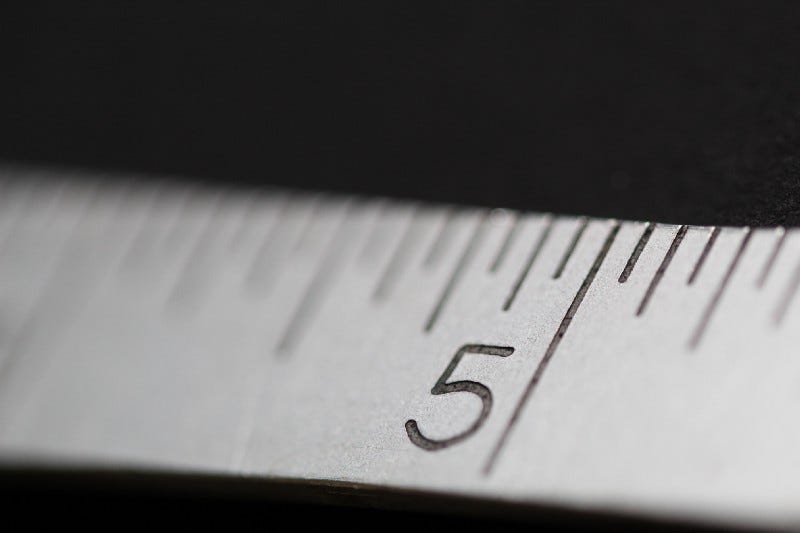
The 5-second test refers to a form of usability testing that allows us to measure the first impressions users have of a specific design. During a 5-second test, users are shown a fixed interface (e.g., webpage or image from the design that’s being tested) for 5 seconds. Once the interface disappears, they are asked a number of follow-up questions (usually, open-ended) or complete questionnaires to elicit their first impressions. Testing can be conducted in person or remotely using a testing tool. Variations of the test where the interface is presented for up to 20 seconds are being used depending on the complexity of the design and the aim of the testing.
Why 5 seconds?
The aesthetic-usability effect refers to people’s tendency to perceive more aesthetically pleasing designs as more usable than those considered to be less aesthetically pleasing. Research suggests that this perception is formed within the first few seconds of viewing a design and sometimes it can persist after actual interaction with a product. This relates to the visceral level of design as described by Norman:
“where appearance matters and first impressions are formed. Visceral design is about the initial impact of a product, about its appearance, touch, and feel” — Norman (2004, p37)
Previous research has shown that users spend about 10 seconds assessing a website before deciding whether to stay or leave. Lindgaard and colleagues (2011) attempted to quantify how long users need to form an impression when using a webpage and found that “visual appeal can be assessed within 50 ms”. As a result, designers have about 50ms to make a good first impression. According to Abendschein et al. (2021) these observations were the basis for the 5-second test.
Studies indicate that the first impression users form can persist even after an actual interaction with the design. For example, a positive first impression can minimise the effects of a poorer UX and vice versa.
Is it valid?
Even though the 5-second test is widely used in the industry until recently there was no scientific validation of this method. To measure its validity Gronier developed a novel experimental protocol to compare the elements that users remember the most after either five seconds or a period of time with no specified time limit.
The results showed that “the 5-second test captures the very first moments of the human-computer interaction”. This first impression users form affects the entire period of their interaction with the interface.
According to Gronier, aesthetic elements such as colour and icons affect the first impression users form. This means that the 5-second test might be an ideal way “to test your graphical charter or your corporate identity guidelines”.
The 5-second test cannot examine the actual usability of websites, since there is no actual interaction involved. As a result, it is important to apply the 5 second test to a static webpage, a high fidelity mockup, or an image of the application that’s being tested. According to Hsieh (2017) the use of static screenshots has a number of benefits such as:
“…ensuring that all participants viewed the exact same version of each of our chosen websites; that any moving parts, like carousel backgrounds, would not be present to distract participants…and that each participant would view each web page for a precisely timed 5 seconds”
Gronier (2016) reported that most usability problems in their study were found after 5 seconds. This suggests that the 5-second test cannot be used to assess the actual usability of a product. What it does measure is the perceived usability of an interface and the first reaction or impression to it.
“using a 5 second test seems to be sufficient time to gather the user experience of an interface and the quality of the design elements.” — Gronier (2016)
When to use it?

The 5-second test is just another tool in the UX practitioner's toolbox, which allows you to collect qualitative (and quantitative) data about the users’ first impressions. This is a way to test that the interface communicates the right message to the right audience in a clear way.
The 5-second test can be useful when you are trying to make quick improvements to content or landing pages (an example of this is described here by Perfetti).
It is important to notice that this method is only suitable for measuring first impressions and is only effective when a limited amount of information is presented to the users. If you need to measure comprehension of complex information, the 5-second test is not appropriate and another type of test needs to be employed (e.g., user interviews)
Read more
Measuring the First Impression: Testing the Validity of the 5 Second TestJUS
Impressions at First Touch | Proceedings of the Fifteenth International Conference on Tangible…
Impressions at First Touch | Proceedings of the Fifteenth International Conference on Tangible…
Attention web designers: You have 50 milliseconds to make a good first impression!




